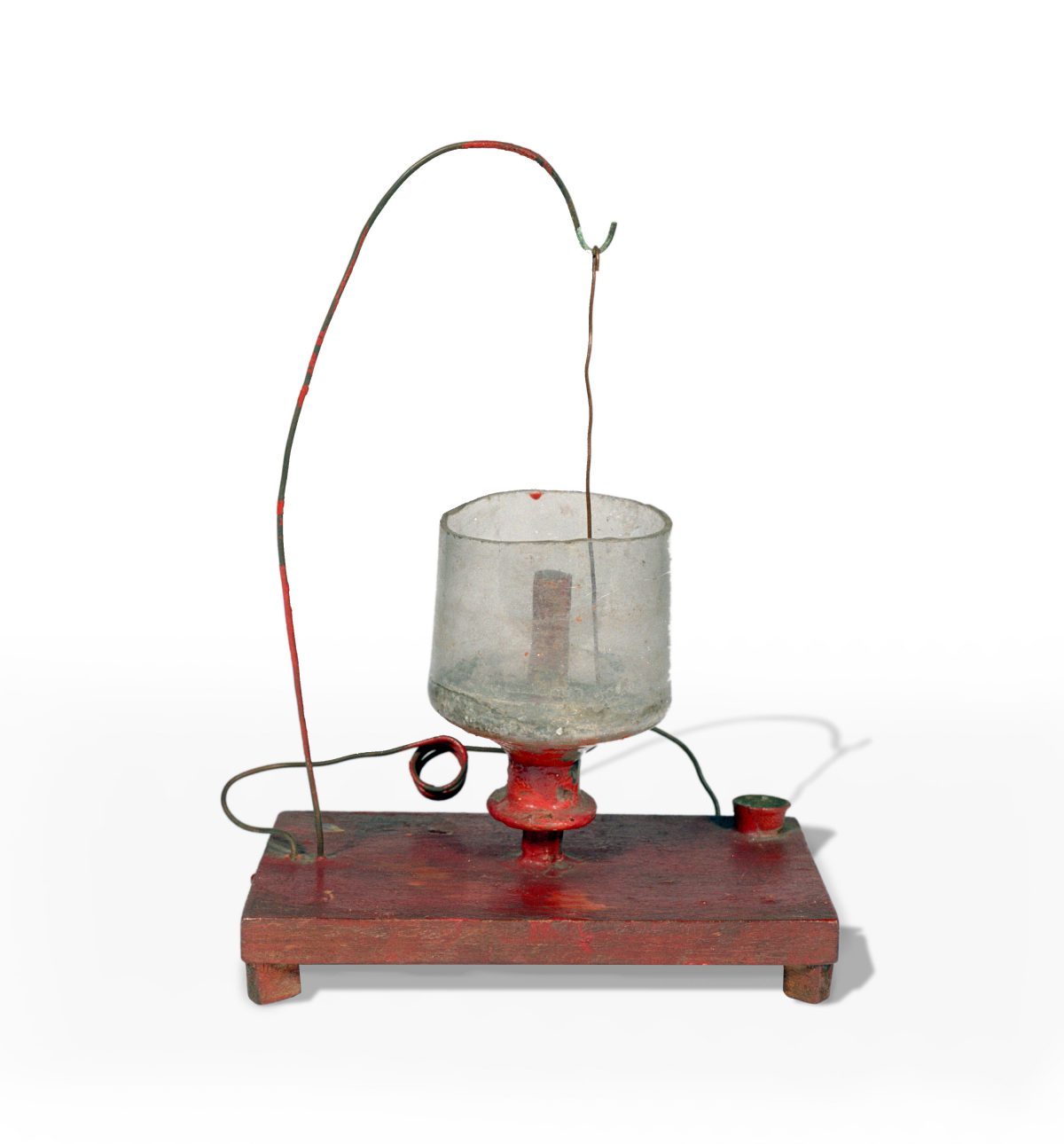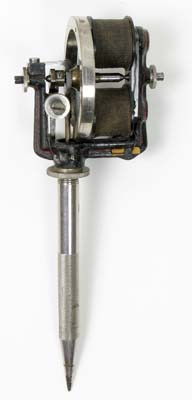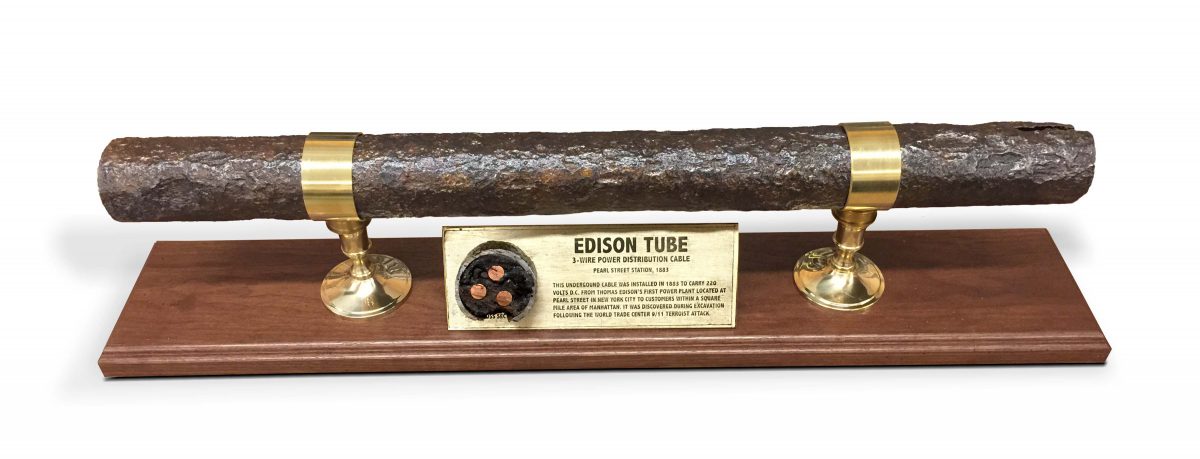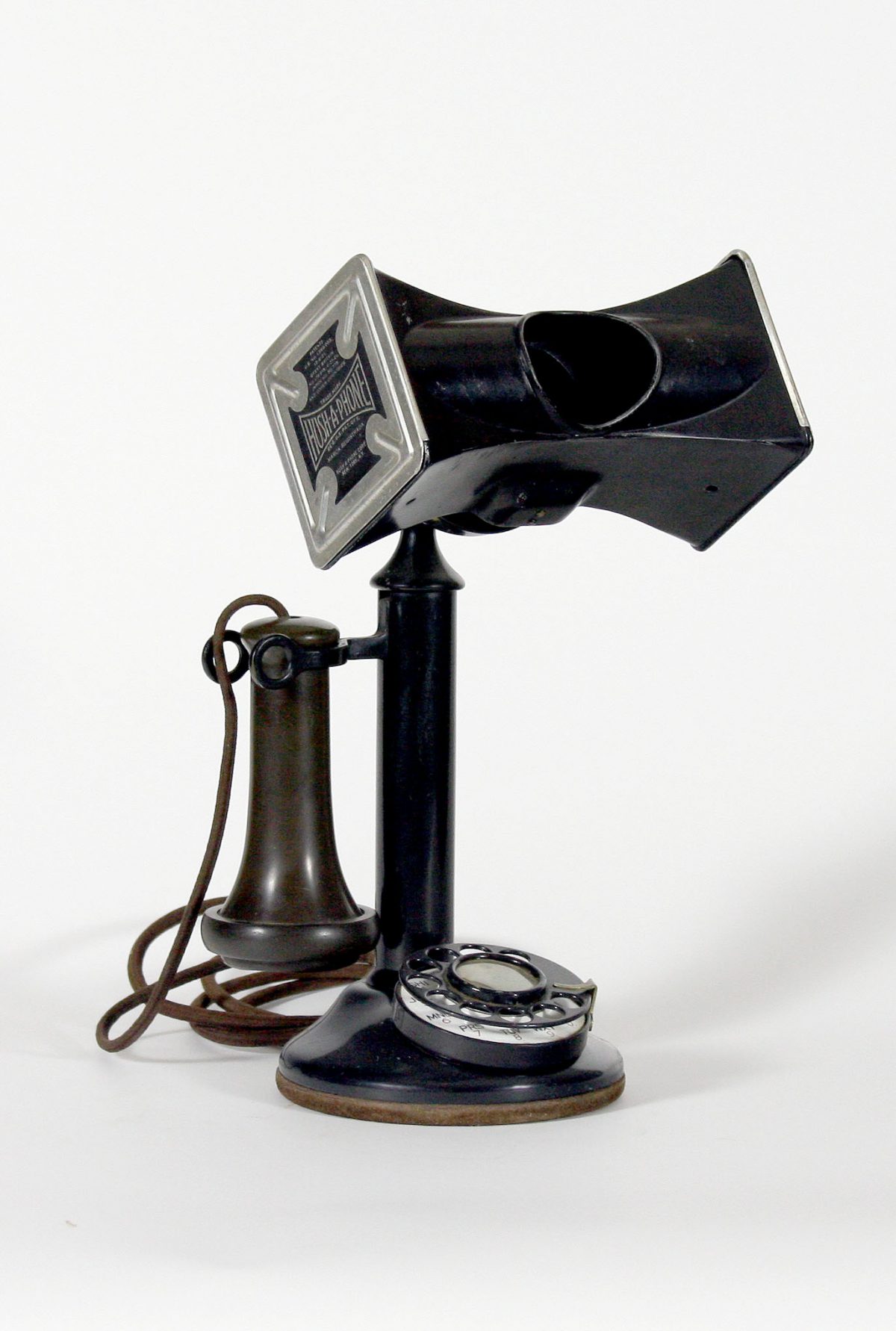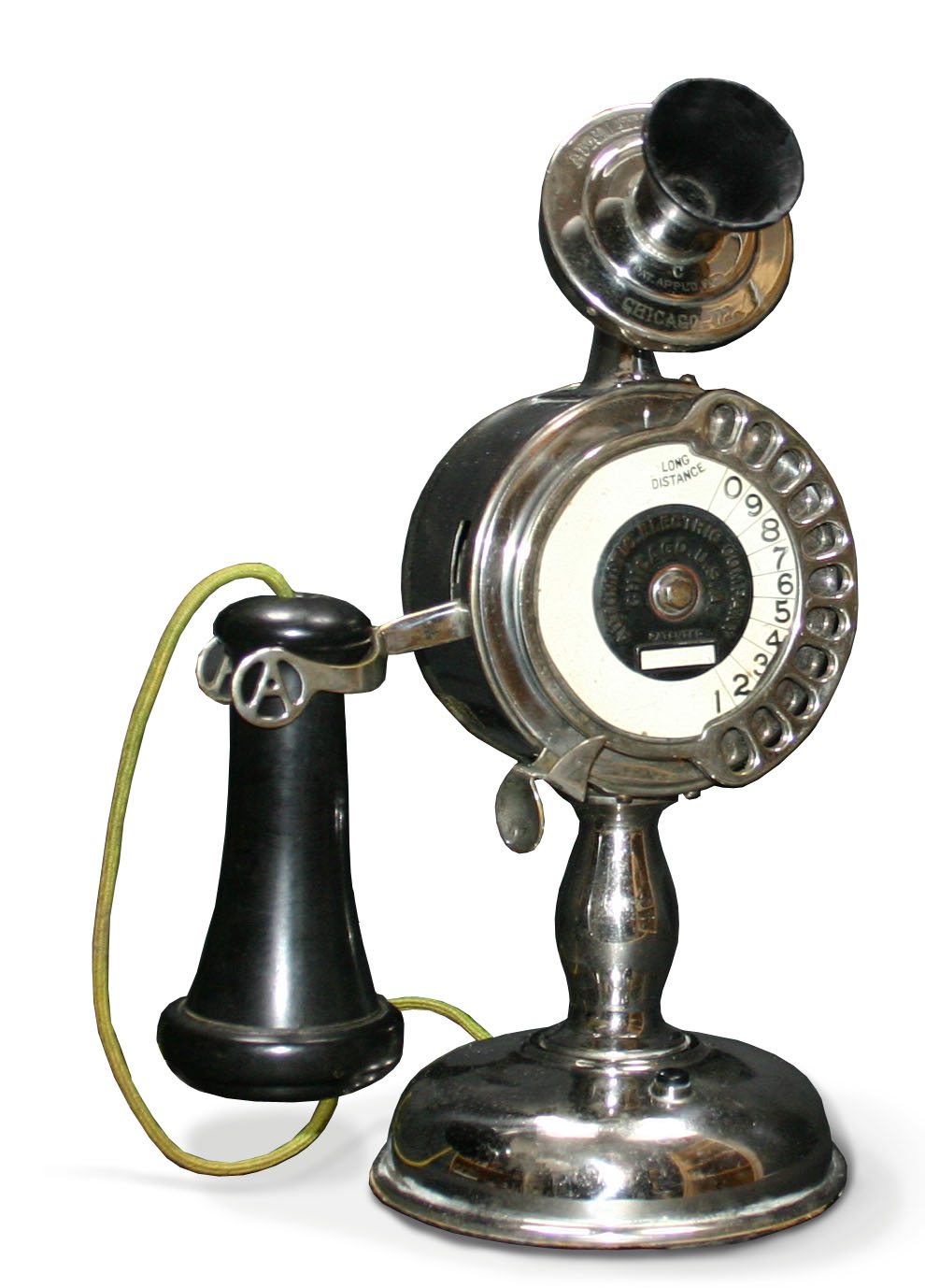Two phase Alternating Current electric motor. Made of brass, wood, copper, steel, iron and ebonite. Four electromagnets are supported on a 9 1/4” circular iron core that reaches 18” at its highest point. The 4-pole rotator is hinged, allowing the motor to operate in a vertical or horizontal plane. The mahogany base measures 22 1/8 X 12”, supporting 6 brass …
Faraday’s Rotating Cup Experiment
One of the first electric motors. Originally conceived by Michael Faraday to confirm and demonstrate Oersted’s observation that a magnetic field exists in a spiral around a conductor. A permanent magnet is placed vertically inside a container of mercury. A copper wire is suspended into the mercury from above. An electric current is passed through the wire and mercury, creating …
Electric Phrenology Helmet
Consists of two parts, a wood box containing a sledge induction coil and three batteries, and a headpiece. The headpiece is of 5/8” wide brass strapping, forming a crown 9” in diameter and 51/4” tall. 13 brass electrodes, each 3” in length, are evenly spaced across the crown. Signed “E. BALZARINI, MILANO”. The induction coil measures 3” dia. x 33/4” …
Edison Electric Pen – 1876
The first electric copy machine, and probably the first practical application of the electric motor. Edison invented the electric pen as a means to produce copies of his correspondence and notes. A small electric motor operates a tiny needle in a rapid up/down motion, producing a series of small holes as the operator writes on specially treated paper. Later, a …
Edison’s first successful electric lamp
The electric light was not invented by Thomas Edison. In fact in the years preceding Edison’s invention, electric light was somewhat common in the form of electric arc lamps that were in use in factories, or to light up the town square. The light from an arc lamp is produced by passing a large current between the electrodes (usually carbon) …
“Edison Tube” Electrical Distribution Cable
This underground cable was installed by Thomas Edison in 1883 to carry 220 volts D.C. from Edison’ first power plant located on Pearl Street in New York city to customers within a square mile area of Manhattan. It was discovered during excavation following the 9/11 terrorist attack on the World Trade Center. A cross section of the cable is shown …
Voltaic Piles – The first batteries
In 1800 Italian Physicist Alessandro Volta developed the voltaic pile, a forerunner of the electric battery. The first pile consisted of a number of discs of zinc and silver separated by pieces of wet paper and arranged in a vertical column. This was the first device to produce a steady stream of electricity (direct current) and could operate for decades. …
The First Transcontinental Telephone
One of four telephones used to inaugurate the transcontinental telephone line on January 25, 1915. The plaque on the telephone reads: “This instrument used by Maj. Henry L. Higginson at Boston, Mass. To open the Transcontinental telephone line with Thomas A. Watson at San Francisco, Cal. Monday evening January 25, 1915. Transmitter cutout & signal buttons added” Higginson, a civil …
Hush-a-Phone
This unassuming little device, called a “Hush-A-Phone,” is a small rectangular baffle that fits over the mouthpiece of a candlestick telephone. There is an opening in the front just big enough to place your lips into. When you speak, the party on the other end of the line can hear clearly, but no one in the room with you can …
Strowger Telephone
““girl-less, cuss-less, out-of-order-less, and wait-less.” – Inventor Almon Strowger announcing the first automated telephone exchange. Strowger 11 digit Potbelly Dial Candlestick. This is the first dial telephone. The inventor, Almon Strowger, was an undertaker in Kansas City in the late 1800s. According to legend, the wife of his only competitor worked the switchboard at the local telephone exchange. Whenever a …
- Page 1 of 2
- 1
- 2
